|


256-bit encryption
$500,000 protection

|
USS
MIDWAY AIRCRAFT CARRIER
MODEL
The USS
Midway is the lead ship of the Midway
class of three United States Navy aircraft
carriers. She was commissioned on 10 September
1945, eight days after the Surrender of Japan.
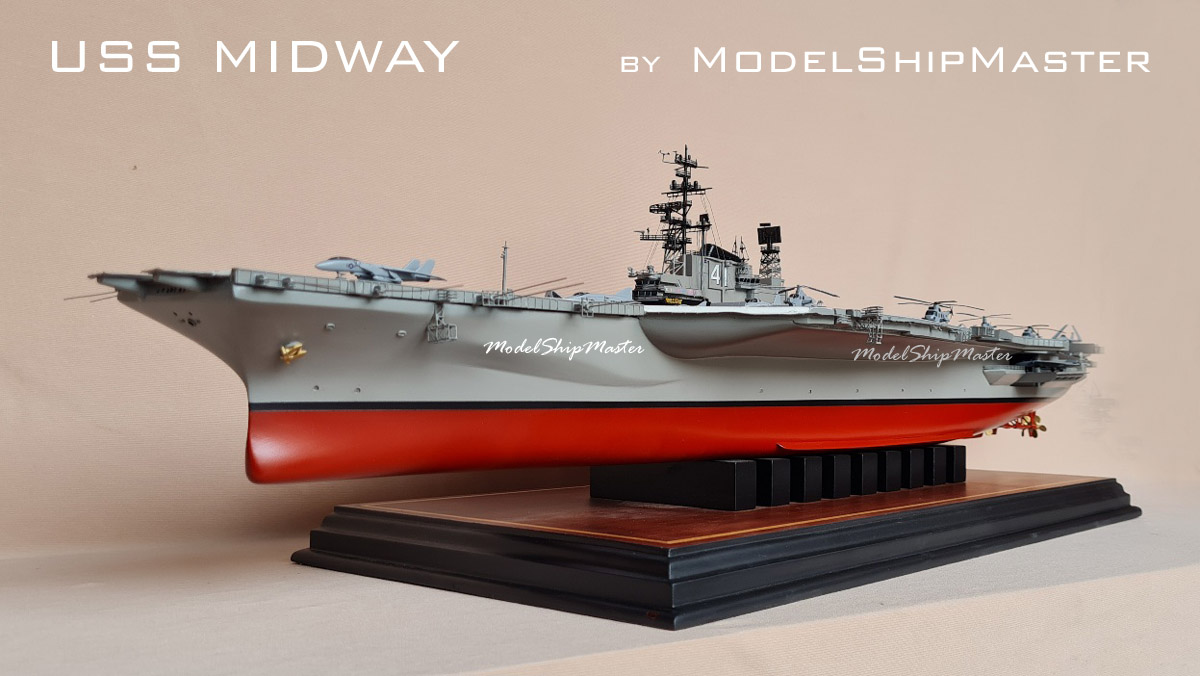
The USS Midway class was conceived in 1940 to determine the
effect of including an armored flight deck on a
aircraft carrier.
The calculations showed that the effect would
be a reduction of air group size—the resulting ship
would have an air group of 64, compared to 90-100 for the
standard Essex-class.
The concept went to finding a larger carrier that could
support both deck armor and a sufficiently large air
group.
While the previous carriers had eight main engineering
compartments, the Midway aircraft carrier had 26. More
extensive use of electric arc-welding reduced the weight
by about 10 percent of what would have been for riveted
structural assembly.
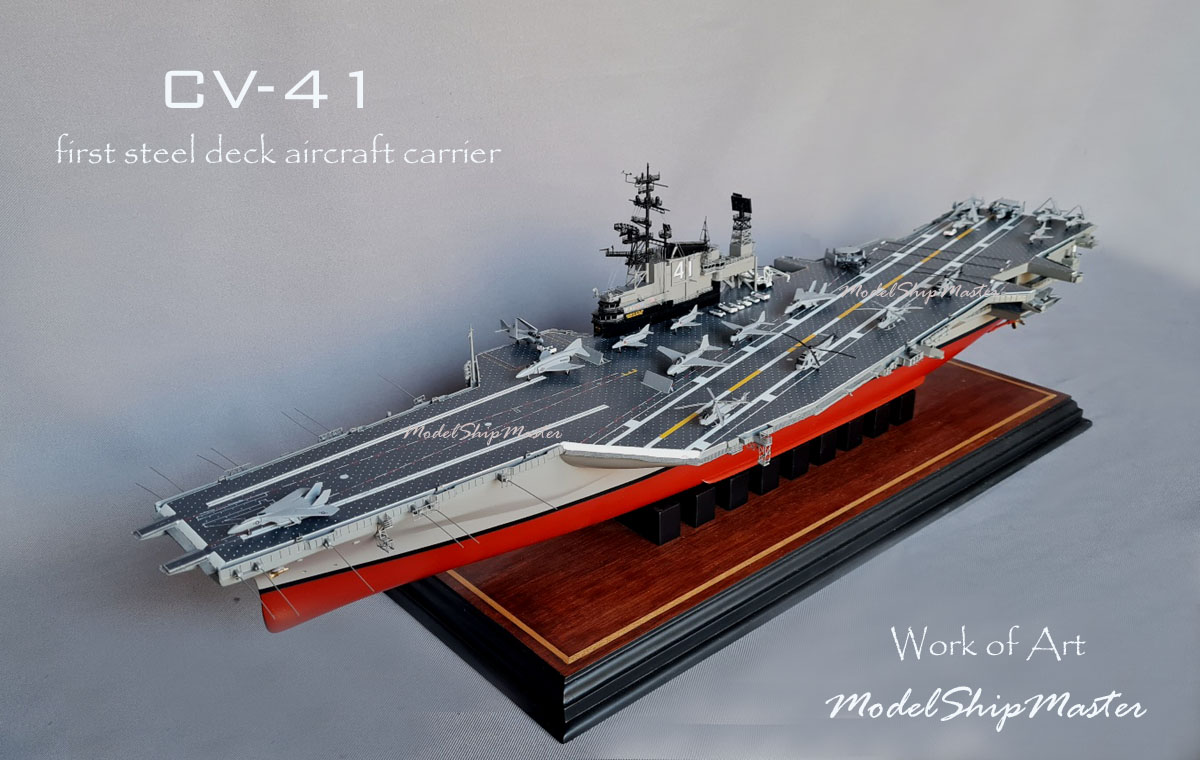
The resulting Midway
aircraft carrier models were very large,
with the ability to accommodate more planes than any
other carrier in the U.S. fleet (30–40 more aircraft
than the previous class.) USS Midway
was the first aircraft carrier that did not pass through
the Panama Canal. These
1,000-foot-long warships were once the largest aircraft carriers
afloat. When operating at sea they were
refueled every three days, burning 100,000
gallons of oil a day.
All three ships were essential to the Navy's strategic
nuclear weapons role in Europe. Until the availability
of the Forrestal-class, they were the premier commands
sought by senior naval aviators.
They were "admiral makers" for many of their
commanding officers.
The USS Midway played key roles in the Cold War. In 1946,
she became the first aircraft
carrier to operate in the
midwinter sub-Arctic. The following year she became
the only ship to launch a captured German V-2 rocket.
The trial’s success became the dawn of naval missile
warfare. Just two years after that, USS Midway model
sent a large
patrol plane aloft to demonstrate that atomic bombs
could be delivered by a carrier.
During the
1950s, all three Midway ships underwent
modernization which added angled decks, an
enclosed, steam catapults, mirror landing
systems, an aft deck-edge elevator, and other
modifications that allowed them to operate a new breed
of large, heavy naval jets.
All three of the Midway aircraft carrier class made combat deployments in
the Vietnam War. In her first combat
deployment in 1965, USS Midway's aircraft shot down
three MiGs, including the first air kill of the war.
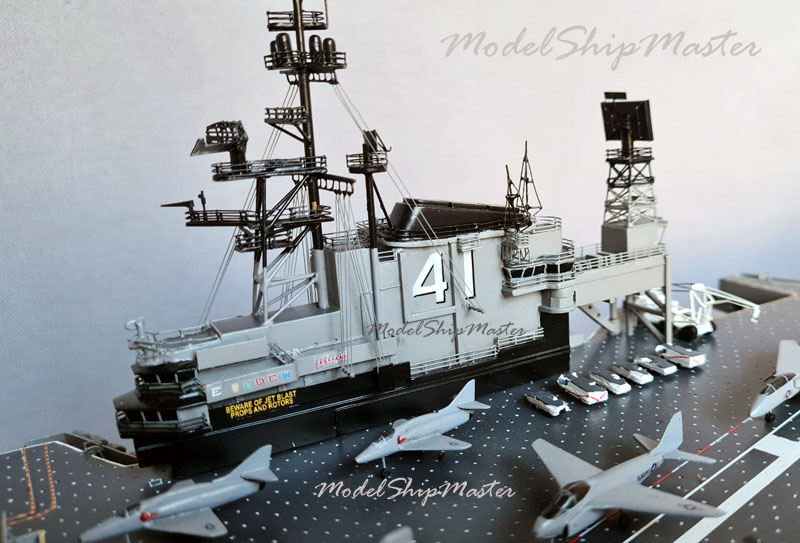 |
In the
late 1960s, USS Midway underwent an extensive
modernization and reconstruction program, which was
expensive and thus was not repeated on the USS Franklin
D. Roosevelt and the USS Coral Sea.
In 1973, as potential threats to the Arabian oil supply
grew, USS Midway was transferred to Yokosuka, Japan,
making it the first American
carrier home ported abroad.
During Operation Desert Storm, the USS Midway model was one
of the six aircraft carriers deployed. She served
as the flagship for naval air
forces in the Gulf and launched more than 3,000
combat missions with no losses.
USS Midway
played an important role in two humanitarian operations.
During the chaotic fall of Saigon
in April 1975, she was a floating base for helicopters which evacuated more than 3,000
refugees. In 1991, she helped evacuate
civilian personnel from Clark Air Force Base in the
Philippines after eruption of
nearby Mount Pinatubo.
USS Midway
aircraft carrier is now open to the public as a museum
in San Diego, California.
|
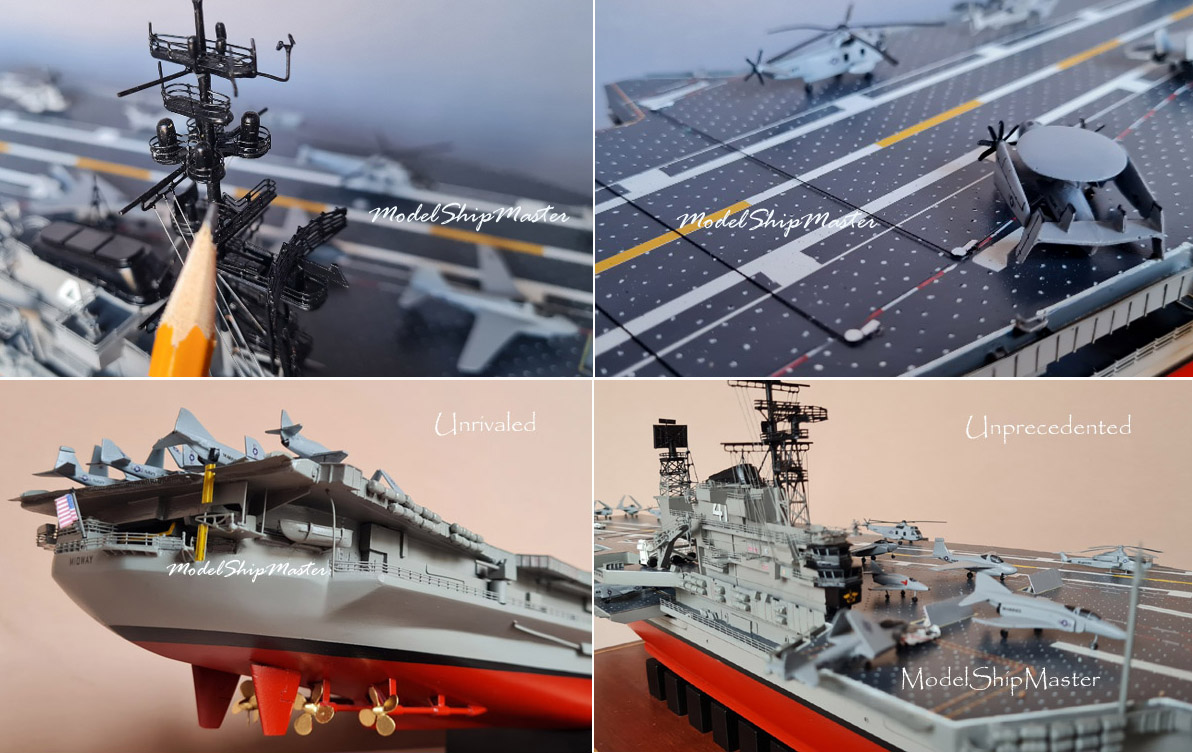
This
primarily wood USS Midway model portrays the ship
in her
latest configuration (with angled deck and two 8-cell
Sea Sparrow launchers, two Phalanx CIWS.) Our Midway
model has the following aircraft: McDonnell Douglas F-4 Phantom II, Vought A-7
Corsair, Grumman EA-6B Prowler, Grumman E-2
Hawkeye, Sikorsky SH-3 Sea
King, Sikorsky SH-60 Seahawk.
33" long x
10" tall x 10" wide $3,690
 Shipping and insurance in
the contiguous USA included.
Other places: $350 flat rate. Note that we ship the
model with the island detached from the deck. Installing
it is "piece of cake" and should take you less than 3
minutes. This model is in stock
and can be shipped within five business days. Shipping and insurance in
the contiguous USA included.
Other places: $350 flat rate. Note that we ship the
model with the island detached from the deck. Installing
it is "piece of cake" and should take you less than 3
minutes. This model is in stock
and can be shipped within five business days.
27" $2,950 Shipping and insurance in
the contiguous USA included.
Other places: $300 flat rate.
58" long
(1/200 scale) $5,930 Shipping and insurance in
the contiguous USA included.
Other places: $700 flat rate.
If you
want the Franklin Roosevelt or the Coral Sea aircraft
carrier, just let us know.
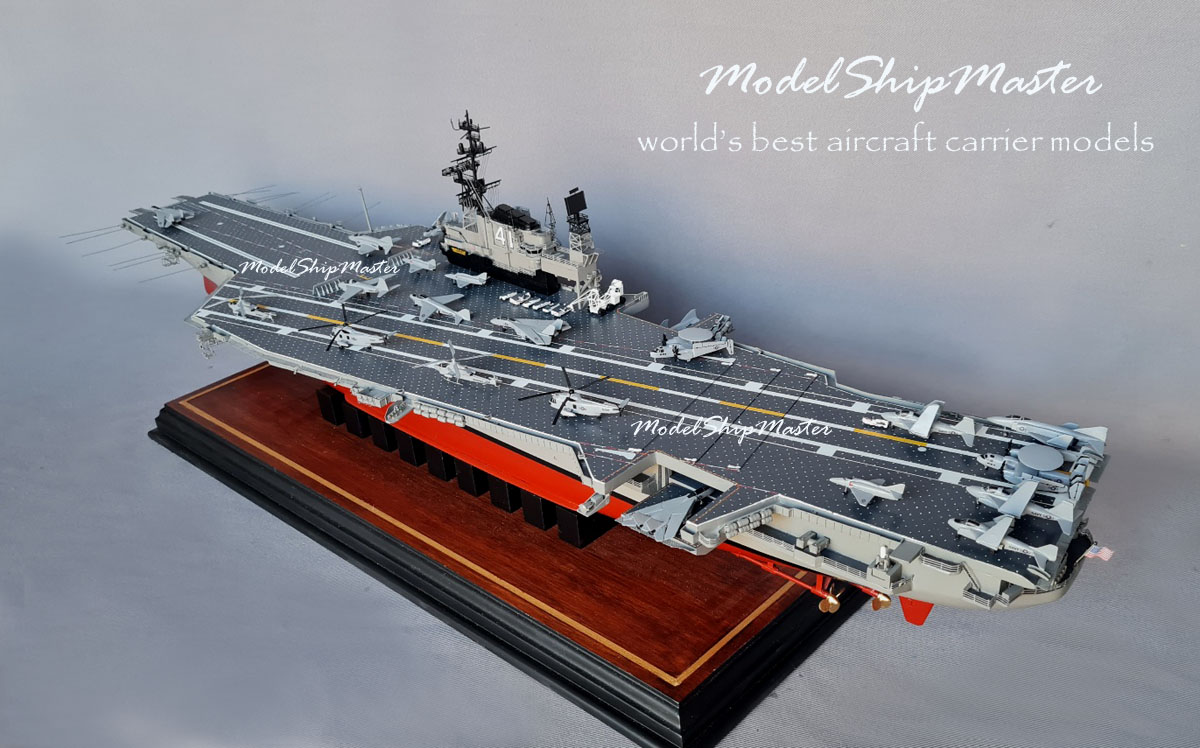
Learn more about the
Midway model here:
https://en.wikipedia.org/wiki/Midway-class_aircraft_carrier
|